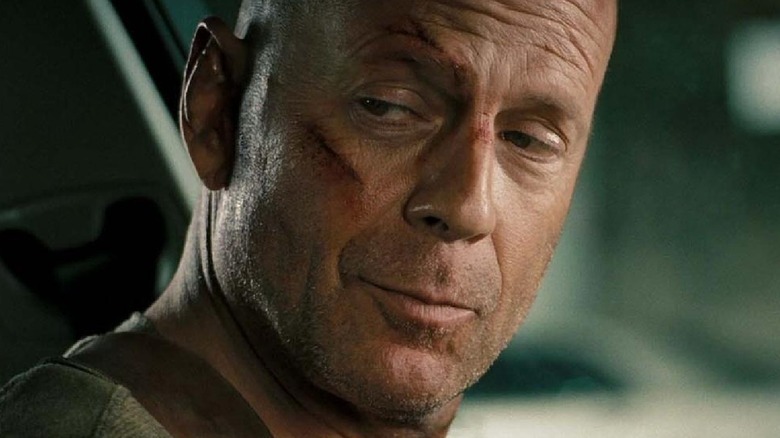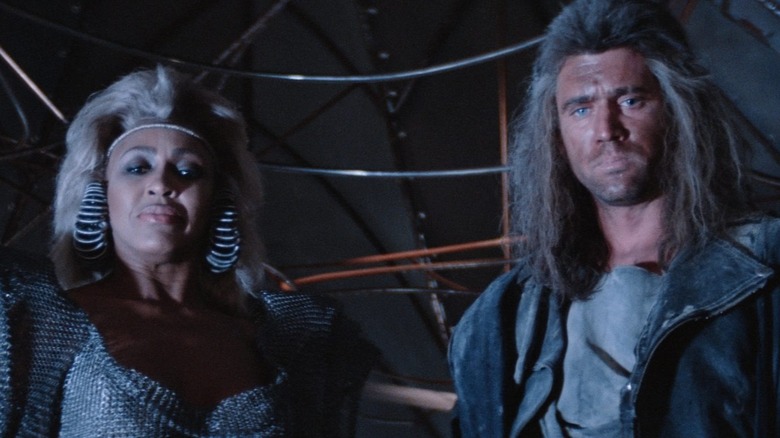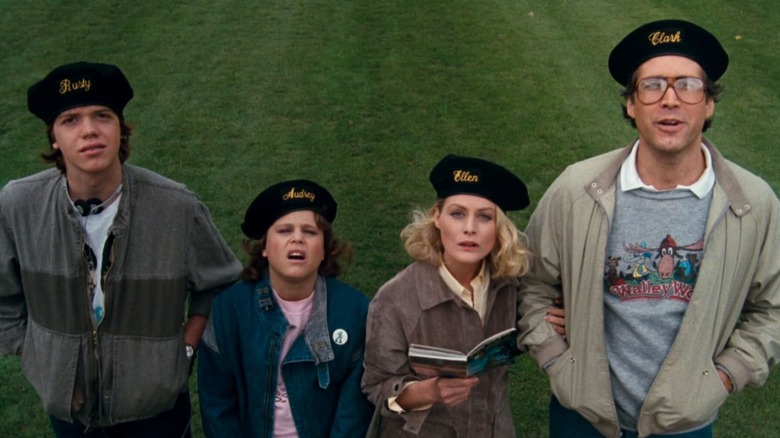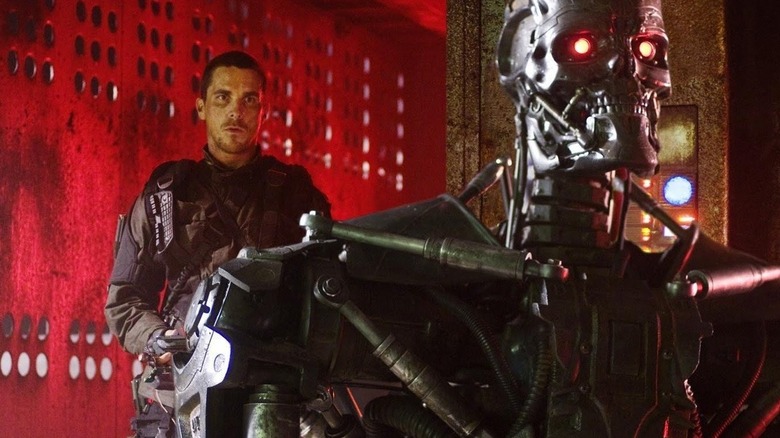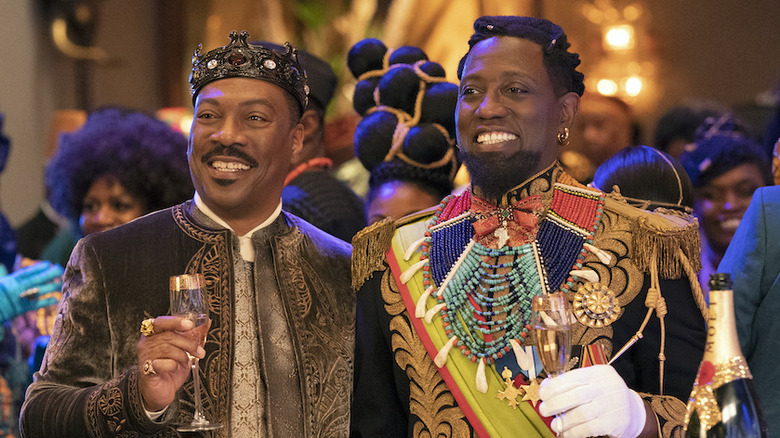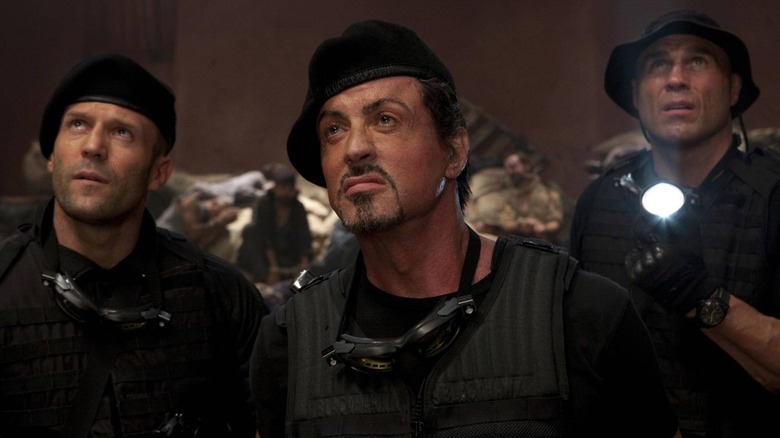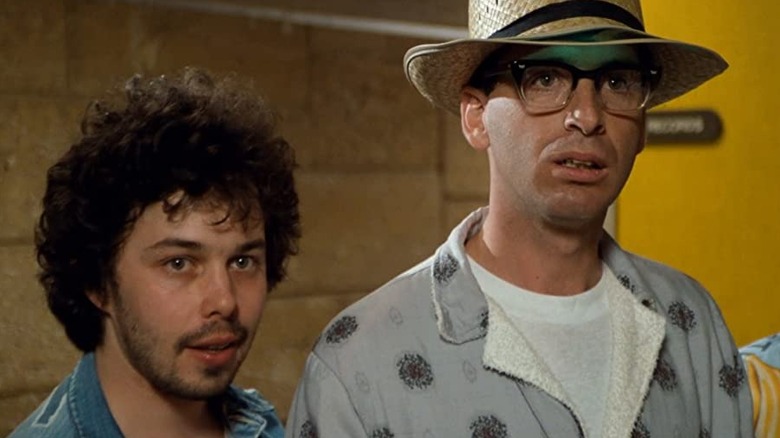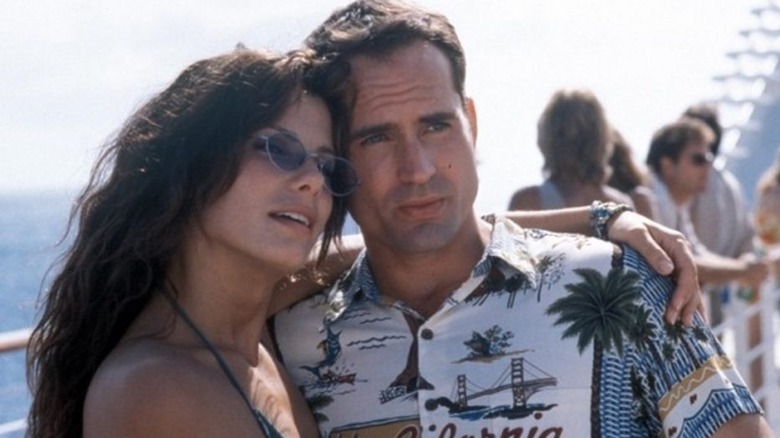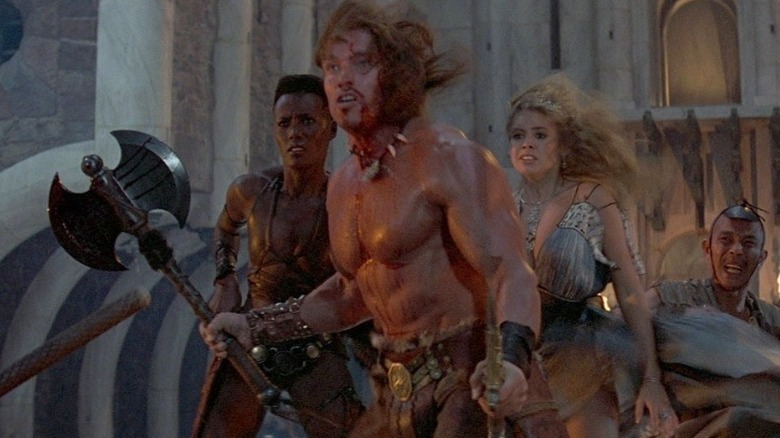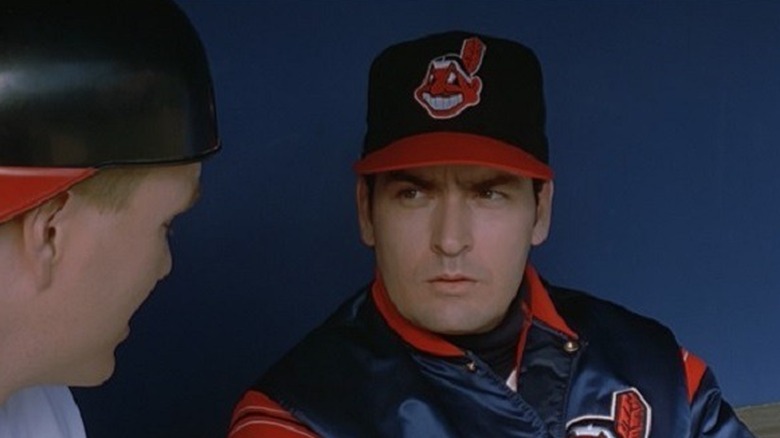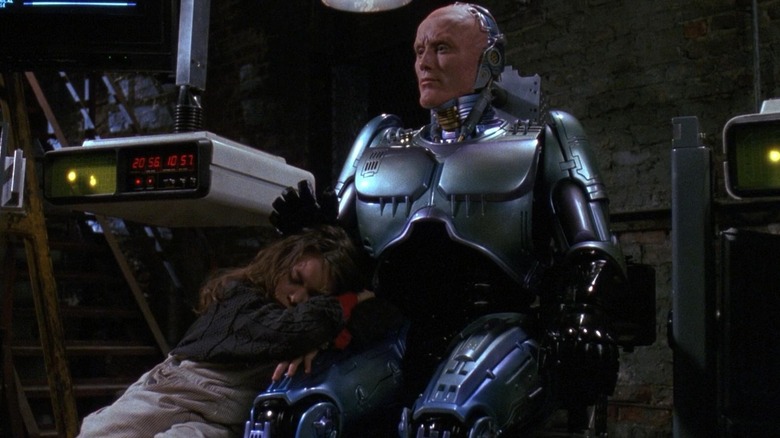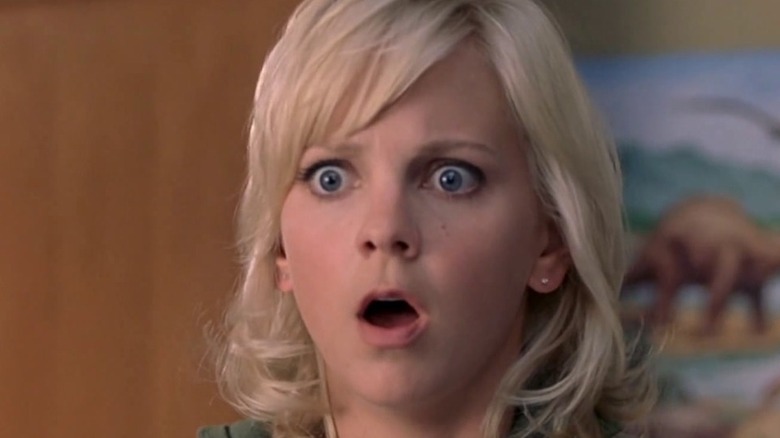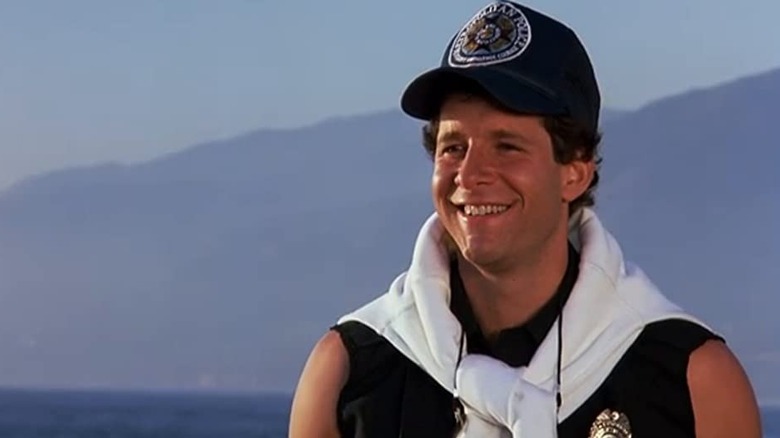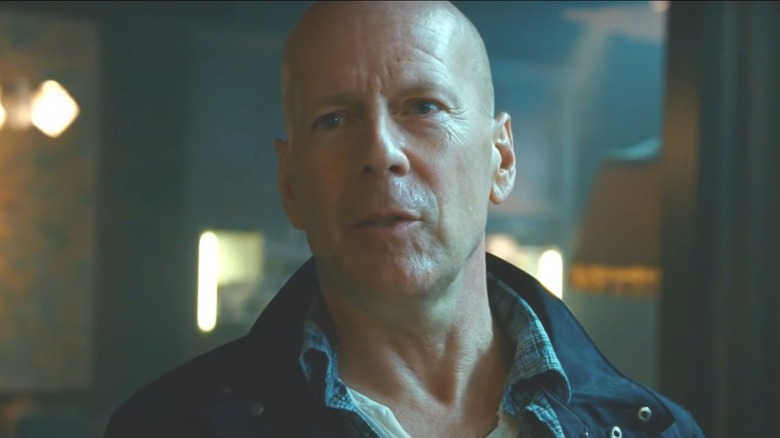R-Rated Movies With PG-13 Sequels
Movie ratings don't seem like a very big deal these days. Most movies come to a streaming service, and unless you are watching with young children or you're particularly sensitive to certain kinds of content, you basically watch whatever you want to watch without giving much thought to what something is rated. But there was a time when it was extremely important what a movie was rated, as R-rated films automatically had a smaller reach than G, PG, or PG-13 movies.
For proof of this, look no further than Box Office Mojo's list of the highest-grossing movies of all time in the U.S. — you don't hit R-rated movies until you've moved beyond the top 50. Clearly, there's something to the idea that movies do better if they aren't rated R. With that in mind, it's probably not surprising how often an R-rated movie ends up spawning PG-13 sequels. Sure, the original did well enough to justify a sequel in the first place, but studios love the added financial potential that dropping things down to PG-13 can bring. Sometimes it works, sometimes it doesn't — but it's definitely been attempted a fair amount of times.
Mad Max
The most recent installment in the "Mad Max" franchise, the masterpiece that is "Mad Max: Fury Road," was very much a hard-R action movie in keeping with the tradition of the earlier entries in the series. That is, except for the third film, 1985's "Mad Max Beyond Thunderdome," which sent the series on a brief detour into PG-13 territory.
The original "Mad Max" wasn't a blockbuster success, but word of mouth and cult hit status inspired a sequel that more than doubled the box office take of the original. Emboldened by this success, a third film was ordered and given a much bigger budget than the previous movies. To help ensure that it was money well spent, the decision was made to reach the widest possible audience with "Beyond Thunderdome" by making it PG-13 and toning down the violence and brutality — which are kind of the whole point of a "Mad Max" movie. The decision didn't pay off, and "Beyond Thunderdome" was both a critical and commercial disappointment that buried the series for 30 years.
The movie marked one of only four acting roles for musician Tina Turner where she didn't play herself, and the next and final one after this would be another flop — "Last Action Hero" — at which point she apparently decided that was enough of that.
National Lampoon's Vacation
John Hughes made a name for himself in the '80s with family-friendly comedies and movies about the teenage experience, and then skewed even younger in the '90s after the blockbuster success of "Home Alone." So people might not realize that he actually wrote a few R-rated movies — including one that kicked off his most enduring franchise.
With "National Lampoon's Christmas Vacation" being a family holiday staple for the last 30-plus years, it's easy to forget that the first "Vacation" movie — which followed Clark Griswold (Chevy Chase) and his clan on their ill-fated adventure to Wally World — was actually an R-rated comedy with f-bombs, a topless woman, and plenty of other inappropriate material. It's no "American Pie" or "The Hangover," but it would definitely come as a shock to anyone who only knows the franchise as something they can watch with the whole family.
Sequel "National Lampoon's European Vacation" was toned down to PG-13, and the franchise wouldn't return to R territory until the 2015 revival, where Ed Helms and Christina Applegate took over as the leads — but not before 1997's "Vegas Vacation" went even tamer with a mere PG.
Terminator
The "Terminator" franchise has really had a rough time. After a well-liked original paved the way for "Terminator 2: Judgment Day" — one of the best and most iconic action movies of all time — James Cameron left the franchise behind for "True Lies" and "Titanic." Smart move for him, especially with the latter making him a buck or two, but not so much for the subsequent "Terminator" sequels.
"Terminator 3: Rise of the Machines" did well enough with critics and fans, earning praise for its introduction of a female Terminator, but soft reboot "Terminator: Salvation" is where things first started to fall apart. The fact that they tried to make it PG-13 definitely didn't help matters much, as it made less money than "T3" despite the rating change. The next installment, "Terminator: Genisys," was a disaster on all fronts, to the point that being rated R wouldn't have made any difference at all.
2019's "Terminator: Dark Fate" was a step back in the right direction, using a story co-written by James Cameron and bringing back Arnold Schwarzenegger, Linda Hamilton, and an R rating, but it still tanked at the box office.
Coming to America
Few movie stars reach the level and longevity of success that Eddie Murphy had in the 1980s, and among the numerous all-time classics he starred in was 1988's "Coming to America." It might not have been the hardest R of his career, especially compared to the likes of "48 Hours" or "Harlem Nights," but there was definitely a lot of censoring that needed to be done for the constant airings of the movie on network television in the decade or so after its release.
It's somewhat surprising that the long-awaited sequel, "Coming 2 America," made a point to be PG-13, since it was a Prime Video release anyway and didn't rely on box office numbers. There's also the matter of it being mostly a movie for fans of the original, very few of which are under the age of 17. Still, the return of Prince Akeem and company was a much more family-friendly affair than the original, which becomes most obvious in the much more toned down conversations between Mr. Clarence and the regulars at his barbershop.
The Expendables
Along with writer David Callaham, Sylvester Stallone conceived of "The Expendables" as a throwback to and celebration of the kinds of over-the-top, R-rated action romps from the '80s and early '90s that helped make him a superstar. They brought together an extremely impressive list of action heroes from the past and present to either play big roles or at least show up in cameo form, including Arnold Schwarzenegger, Bruce Willis, Jet Li, Jason Statham, Dolph Lundgren, and Terry Crews.
Audiences had fun, and a sequel was made that added even more action movie royalty like Chuck Norris and Jean-Claude Van Damme to the franchise. It performed even better at the box office than its predecessor, which makes the decision to tone "Expendables 3" down from R to PG-13 a baffling one. In an interview with Crave Online after the movie's release, Stallone said, "It was a horrible miscalculation on everyone's part in trying to reach a wider audience but in doing such, diminish the violence that the audience expects." He assured fans that the upcoming "Expendables 4" won't make the same mistake.
Revenge of the Nerds
If you made a comedy in the 1980s that used college as a backdrop, it was almost a requirement that you include nudity and adult humor. "Revenge of the Nerds" definitely followed that tradition with the story of a group of social outcasts from the Lambda Lambda Lambda fraternity house who attempt to enact revenge on the jocks and preps that rule the school. It definitely had many of the elements of the wild sex comedies of the era, only it leaned much more heavily than most of its peers into the trope of the awkward underdogs who beat the bullies and get the girl(s).
Most movies of this ilk didn't age well, but "Revenge of the Nerds" has some especially cringeworthy scenes that made it uncomfortable to watch even at the time. That, combined with how appealing a movie with this premise can be for younger audiences — minus the college party exploits — resulted in "Revenge of the Nerds II: Nerds in Paradise" ditching the adult stuff in favor of a PG-13 rating. But it only brought in half the box office of the original, and the next two installments (via The Numbers) were relegated to going direct to primetime network television.
Speed
If your R-rated action movie was super successful and you were going to make a sequel, what would you do? Well, what the studio behind "Speed" did was make the sequel PG-13, move the action to a boat instead of a bus, and then come up with a script that original star Keanu Reeves would end up turning down (per People). The result was that the popular "Speed" was followed up by the extremely disappointing "Speed 2: Cruise Control."
Sandra Bullock didn't want to come back either — but she was allegedly offered a huge payday (via Bomb Report) and used her involvement to help get "Hope Floats" funded (per CNN), so she signed on alongside new male lead Jason Patric. In all fairness, the first "Speed" wasn't the hardest R in the world and a PG-13 sequel in the same vain could have worked, but that was the least of the problems facing "Speed 2." If nothing else, the movie gave us Willem Dafoe gleefully chewing up the scenery as an over-the-top villain who eventually earned meme immortality.
Conan the Barbarian
The history of Conan the Barbarian is a bit complicated: the character can originally be traced back to stories by Robert E. Howard, but is better known to certain generations for his Marvel Comics version. So it's not necessarily cut-and-dried whether the "correct" way to adapt the character is via unflinchingly violent stories full of blood and nudity, or in a manner more in line with the tamer Marvel stories. The movie series that began with 1982's "Conan the Barbarian" has something of an identity crisis that reflects that confusion.
The original movie — the breakout role for a certain Arnold Schwarzenegger — earns its R rating with extreme violence, blood, dismemberment, female nudity, and other types of adult content. On the other hand, sequel "Conan the Destroyer" toned things all the way down to a mere PG rating, despite the fact that calling him "the destroyer" seemed to suggest he was going to be even more violent than he was in the previous movie. In all fairness, the movie probably should have been PG-13, but that rating didn't exist until after the movie was released. Still, even at PG-13, the tonal whiplash between the two films is jarring.
Major League
When "Major League" came out at the end of the 1980s, it didn't feel compelled to throw in a random scene where a woman is topless, a seeming requirement for R-rated comedies earlier in the decade. In this case, it would have probably been more justified than it was in some of the other movies that did that, as it's about a group of misbehaving male athletes who spend a lot of time in bars and locker rooms — and also starred Charlie Sheen. But because the only real reason for "Major League" to be rated R was its language, a PG-13 sequel wouldn't have been a major stretch.
Instead, 1994's "Major League II" took things all the way down to PG territory, which was probably a bridge too far for the movie to appeal to fans of the original. There were already no shortage of sports movies that young kids could enjoy — including a certain hockey-based series that starred Sheen's brother — so why have "Major League II" get lost in that crowd? Four years later, "Major League: Back to the Minors" attempted to strike the right balance between the tone of the first two films by being PG-13. But it wasn't a very good movie and audiences mostly stayed away, especially since stars Sheen and Tom Berenger didn't return and most of the cast were brand new characters.
RoboCop
"Robocop" poked fun at many things — capitalism, the media, law enforcement, and the excessively violent action movies of its day. It's one of those movies that manages to both expertly satirize its own genre while also still being a crowd-pleaser for fans of said genre. So it gleefully earned every bit of its R rating, and it wouldn't have worked even half as well without it. For all the ways that "Robocop 2" misses the point of the original and abandons all of the first movie's message and nuance, the sequel at least still bothered to be another fun-to-watch violent action movie.
It could have been really interesting if "Robocop 3" only being PG-13 was done with ulterior motives, somehow making a statement about sanitizing violence or dumbing down a movie in order to help it appeal to a wider audience. But unfortunately, none of that was happening here — instead, it was likely just the decision of a studio that wanted more kids to see the movie so it could sell more toys and lunchboxes. The result was a movie that got absolutely torn apart by critics, and barely made a dent at the box office.
Scary Movie
Smartly using the working title for "Scream" (per Indie Wire), "Scary Movie" began as a "Scream" spoof but expanded that agenda to include digs at other horror movies as well as various other pop culture elements of the time. It and its first sequel, "Scary Movie 2," also went really hard on the gross-out and sex-based jokes, at a time when "American Pie" and "There's Something About Mary" had made hard-R comedies full of naughty adult humor a thing again.
However, with "Scary Movie 3," Shawn and Marlon Wayans were out as writers and Keenan Ivory Wayans was out as director. David Zucker of "Airplane!" and "Naked Gun" fame took over directing duties and shifted the humor to be more in line with those films and with a PG-13 rating. That's how things stayed for the next two installments — squarely in PG-13 territory — and remained so as the "Scary Movie" franchise transitioned into its spiritual successors, "Epic Movie" and "Disaster Movie."
Interestingly, the movies that the Wayans brothers worked on after "Scary Movie 2" — "White Chicks" and "Little Man" — were also PG-13, which begs the question of whether even they would have kept the "Scary Movie" franchise R-rated if they stayed on board.
Police Academy
"Police Academy" was a family-friendly franchise for much longer than it was an R-rated one, which makes the original much more of an outlier than some of the other titles on this list. In the case of the first "Police Academy" movie, there is actually fairly little that goes beyond the confines of a PG-13 film for most of its runtime. There's very little violence, almost no blood, and the language stays relatively tame throughout. But it came out in 1984 — and as previously mentioned, it was almost a requirement that any comedies at that time that weren't specifically aimed at kids had to have a scene where one or more women show their breasts.
That's more or less the only reason "Police Academy" is rated R. All they had to do was keep all of the actresses covered up for the subsequent entries and change almost nothing else tonally, and it was pretty easy for the franchise to stay out of R territory going forward. In fact, after "Police Academy 2: Their First Assignment" was rated PG-13, each of the five entries that rounded out the remainder of this bafflingly long-running franchise was merely rated PG, even once they started going straight to HBO.
Die Hard
Considering John McClane's famous tagline (via Far Out) has the F-bomb in it, and he's constantly murdering terrorists and other assorted bad guys in extremely violent ways, it's hard to see how the "Die Hard" series could ever work in PG-13 land. To be sure, the series that made Bruce Willis a movie star started R and stayed R through its first three installments, and was R-rated again in its most recent one ("A Good Day to Die Hard"). So when did the franchise take its PG-13 detour?
As explained by director Len Wiseman on the DVD commentary for 2007's "Live Free or Die Hard," various scenes were shot in an R-rated way and a PG-13 way, particularly in terms of dialogue, which isn't unusual since that's often done so a movie can later be shown on basic cable or network television. But in this case, the tamer versions for most scenes were actually used in the movie's original theatrical cut, specifically to get a PG-13 rating. It's not clear why anyone felt that the then-18-year-old "Die Hard" franchise was trying to appeal to Gen Z kids rather than the grown-ups who were already established fans — but considering the next movie went back to R, it's obvious that it didn't have the desired effect.
